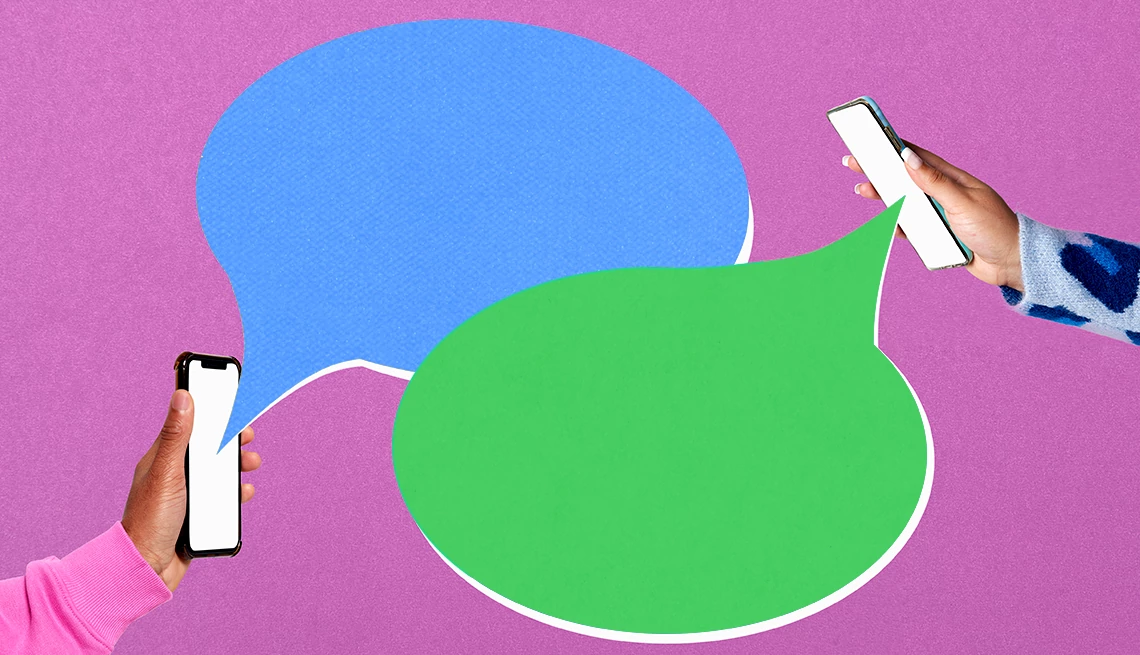AARP Hearing Center


I have an iPhone and routinely send texts to friends with Android devices who then message me back. Now I hear it might not be safe. What gives?
What you’ve picked up on is a recent warning from the FBI that sending texts from an iPhone to an Android device or from an Android to someone with Apple’s smartphone is indeed risky.
On the other hand, messages you send from your iPhone to a person with another iPhone are considered safe. That generally goes for Android-to-Android communications as well, though devices in the Android camp vary, and Google requires users to go through more steps.
Texts sent within a type of messaging system — iMessage for iPhones, Google Messages for Androids — are end-to-end encrypted or scrambled. For all intents and purposes, that means only the intended recipients can decipher or read them, not bad guys or snoops.
Of course, assuming that the only people you text are folks with the same flavor of phone as yours would be silly. That’s where things could get dicey.


Ask The Tech Guru
AARP writer Ed Baig will answer your most pressing technology questions every Tuesday. Baig previously worked for USA Today, BusinessWeek, U.S. News & World Report and Fortune, and is author of Macs for Dummies and coauthor of iPhone for Dummies and iPad for Dummies.
The hack that raised the FBI’s hackles
In early December, the FBI, the Cybersecurity and Infrastructure Security Agency (CISA) and the National Security Agency (NSA) issued security guidelines after a major hacking attack against U.S. telecom giants AT&T and Verizon and at least one other company, named Lumen Technologies.
The data breach, which the Wall Street Journal revealed in October, has been blamed on the Chinese government. It’s known by the moniker Salt Typhoon because of the hacking group behind it.
What can you do?
Most iPhone users will stick with Apple’s built-in Messages app to send iMessages, just as their Android friends will stick with Google Messages. Again, if you’re texting with friends in the same family of devices, you have little reason to be paranoid.
Apple says even it cannot decrypt iMessages while in transit, including photos or videos sent as attachments.


































































You Might Also Like
Make Your Smartphone’s Files Invisible to Prying Eyes
Secret folders that you can lock and unlock — or even hide and unhide — can conceal sensitive apps, documents, files, photos and video
How to Switch Between iPhone and Android Smartphones
You can transfer most, but not all, apps and dataUh-Oh, I Dropped My Smartphone Down a Sewer Grate
Avoid the rice. Resuscitate a wet phone with patience